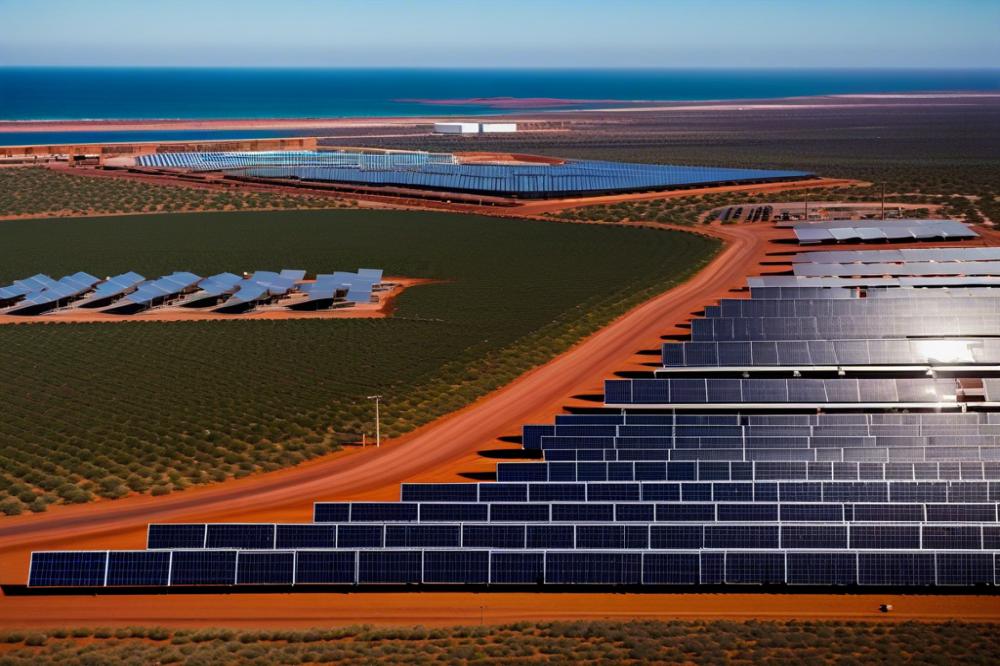Key Takeaways
- A solar farm in Western Australia will fully power BHP’s Port Hedland facility.
- The project aims to generate 120 megawatts of renewable energy.
- Construction is set to begin in early 2025 and expected to be operational by late 2026.
- This initiative is part of BHP’s strategy to reduce greenhouse gas emissions.
- Local government and industry leaders support the project for its economic benefits.
A new solar farm in Western Australia is set to supply 100% of the power needed for BHP’s Port Hedland facility. With a capacity of 120 megawatts, this project represents a significant move towards renewable energy. Construction is scheduled to start in early 2025, and the solar farm is projected to be operational by the end of 2026. BHP emphasizes this development as a key part of their strategy to lower their greenhouse gas emissions substantially.
This renewable energy program has received backing from local government officials and industry leaders. They view the solar farm not only as an important step for sustainability but also as a boost to the local economy. It is believed that this initiative will create numerous jobs during the construction phase and provide ongoing opportunities once the project is operational.
As the implementation of this solar power source moves forward, BHP aims to address its energy needs through cleaner methods. Investing in solar energy aligns with the company’s broader goals of achieving a more sustainable portfolio. Lowering emissions has become a crucial focus, especially as global pressure increases to combat climate change.
Moreover, the initiative is part of BHP’s commitment to incorporating more renewable energy into its operations. The solar farm will play a crucial role in supplying power to Port Hedland, which is one of the largest bulk export ports in the world. By transitioning to solar energy, BHP is taking notable steps towards diminishing its reliance on traditional fossil fuels.
This venture does not arrive without challenges, as several logistical and regulatory aspects need addressing. However, with strong local support and an effective plan in place, BHP seems poised to make this project a reality. The community’s enthusiasm reflects a growing trend toward sustainable energy solutions, particularly in mining and heavy industry.
The significance of this project stretches beyond just power generation. It highlights the importance of adapting to modern energy requirements while considering environmental impacts. As Western Australia continues to advance in renewable energy technologies, projects like this will play a substantial role in shaping the future of energy in the region.
While the timeline for full implementation extends a few years into the future, the anticipation surrounding this solar farm is palpable. With several stakeholders invested in its success, the project may indeed set a benchmark for similar initiatives in Australia and beyond.
Read the full story by: pv-magazine-australia.com



